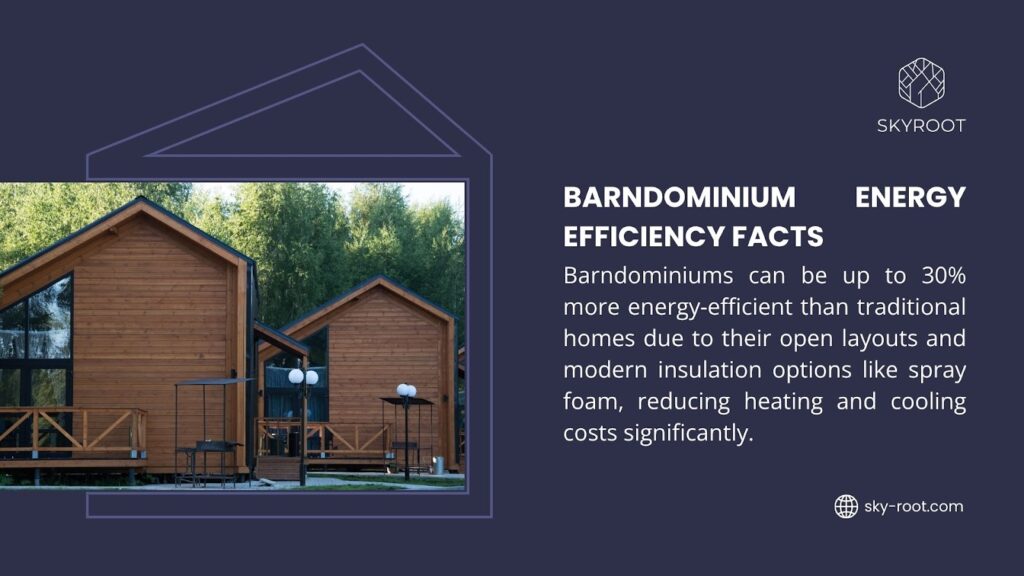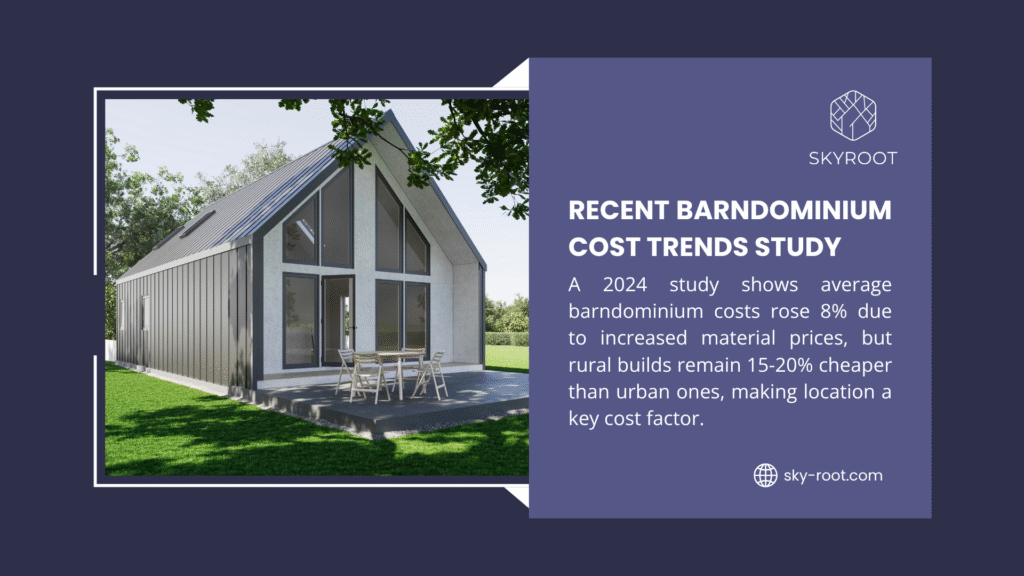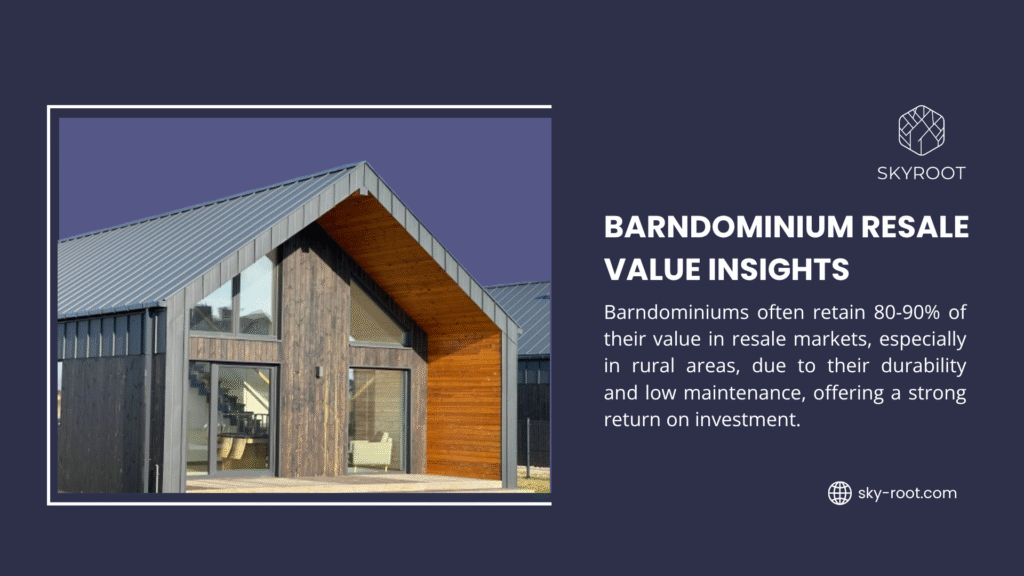So you want to know how much it costs to build a barndominium? Everyone’s asking this question, and honestly, most of the answers floating around online are pretty useless. They’ll throw out some generic range like “$50-80 per square foot” and call it a day. That’s not helping anyone.
The truth is, barndominium costs are messy. Different locations, different materials, different contractors – it all adds up to wildly different price tags.
But barndominiums can save you serious money compared to regular houses. That’s why people are so interested in them. You get more space for less cash, plus they’re built to last forever. The trick is knowing what you’re getting into before you start writing checks.
So, How Much Does It Cost to Build a Barndominium?
Forget those neat little charts with perfect price ranges. The cost to build a barndominium depends on about a million different things, starting with where you live.
Building a basic shell (your frame, roof, and siding) might run $35,000 in rural Arkansas or $75,000 in suburban Denver. Same building, totally different price. Labor costs, building codes, and material delivery — it all varies by location, which makes the actual cost to build a barndominium highly location-specific.
Then you’ve got to make it livable. Electrical, plumbing, insulation, flooring, kitchen, bathrooms — all that stuff that turns a metal building into a home. This is where costs really start jumping around based on your choices.
Go basic and you might spend another $50,000. Want nice stuff? Could be $100,000. Go for luxury finishes and you’re looking at $150,000 or more just for the interior. In short, the cost to build a barndominium comes down to your location, design, and lifestyle choices.
Here’s what people spent on 2,000 square foot builds:
| Location | Shell Cost | Interior | Total | Notes |
| Rural Texas | $38,000 | $52,000 | $90,000 | Basic finishes |
| Suburban Dallas | $48,000 | $87,000 | $135,000 | Mid-range finishes |
| Rural Colorado | $45,000 | $63,000 | $108,000 | Basic finishes |
| Near Denver | $65,000 | $95,000 | $160,000 | Mid-range finishes |
Notice how location makes a huge difference even within the same state.

Size Matters, But Not How You Think
Everyone assumes bigger barndominiums cost way more, but that’s not always true. Yeah, more materials cost more money. But some expenses stay the same no matter what size you build.
Your electrical panel costs the same whether you’re building 1,000 or 3,000 square feet. Same with your septic system, well pump, and a bunch of other stuff. So bigger buildings often cost less per square foot.
Small barndominium homes under 1,200 square feet make sense if you really want to keep costs down. But you might only save $20,000 compared to something 50% bigger. That’s why most people end up building larger than they originally planned.
The sweet spot seems to be around 1,800-2,400 square feet. You get decent space without the per-square-foot costs getting crazy. Plus, barndominium homes use space way better than regular houses because there are no hallways eating up square footage.
Prefab vs Building From Scratch
Prefab barndominium homes sound great on paper. Order a kit, put it together, and save money. Sometimes it works out that way. Sometimes it doesn’t.
The prefab companies will tell you their kit costs $35,000, and you’ll save a fortune. What they don’t mention is that you still need a foundation, utilities, assembly labor, and all the interior work. That $35,000 kit might cost $95,000 by the time you can actually live in it.
Barndominium modular homes are a step up from kits. Big sections arrive pre-built, so construction goes faster. Quality’s usually better too, since everything gets built in a controlled environment. They typically cost about 10-15% less than stick-built, but don’t expect to save $50,000.
Building from scratch gives you exactly what you want, but it takes longer and usually costs more. You’re not stuck with standard designs, and you can adapt to your specific site. But every custom choice adds time and money.
Materials For Your Barndominium House
The big decision is steel frame versus wood frame. Steel costs more upfront, but lets you have those huge open spaces without posts in the middle. Steel doesn’t rot, warp, or attract termites either. It just sits there doing its job.
Wood framing costs less, and most contractors are comfortable with it. Wood insulates better naturally, and it’s easier to modify later. But wood has limits on how far it can span without support.
For the exterior, metal siding and roofing give you that classic barn look while requiring almost zero maintenance. Paint it once and forget about it for 30 years. Wood siding looks nice but needs regular upkeep.
Insulation is huge with metal buildings. Spray foam works great but costs more. Regular fiberglass costs less, but you have to install it right or you’ll have condensation problems.
Hidden Costs That’ll Get You
Site work can be a real budget killer, especially on rural land. Clearing trees, grading, installing a driveway – this stuff adds up fast. Budget at least $15,000 for site prep, more if you’ve got a difficult lot.
Utilities are another big expense if you’re building in the country. Drilling a well might cost $8,000-15,000. Septic systems run $5,000-12,000. Getting power to your site could be $3,000-10,000, depending on distance.
Building permits vary wildly. Some places treat barns like farm buildings with minimal requirements. Others make you follow full residential codes. Call your local building department before you do anything else.
Change orders during construction will destroy your budget faster than anything. That extra window, upgraded flooring, or moved bathroom can add thousands. Figure out what you want before construction starts and stick to it.

Financing Your Build
Getting a loan for a barndominium used to be tough, but it’s getting easier. Most banks will do construction loans now, but you might need to shop around. Interest rates are usually the same as regular construction loans.
After construction, converting to a permanent mortgage is usually no problem. The tricky part is finding appraisers who understand what they’re looking at. This is getting better as more barndominiums get built and sold.
Some people just pay cash to avoid the hassle. If you’ve got the money, it definitely makes things simpler and faster.
What Really Drives Cost to Build a Barndominium
Location is everything. Labor rates, material costs, and building codes – they’re all different depending on where you build. Rural areas are usually cheaper, but not always.
Your finish choices probably affect the cost more than anything else. Basic finishes keep things reasonable. Luxury finishes can double your interior costs. Most people end up somewhere in the middle.
Site conditions matter too. Level lots with good drainage cost less than sloped sites with poor soil. Rocky ground increases foundation costs. Wet areas might need special drainage.
Contractor experience makes a huge difference. Builders who’ve done barndominiums before work faster and make fewer mistakes. General contractors learning on your project take longer and cost more.
Getting It Done Right
Start with a realistic budget that includes everything, not just the building. Add 20% for stuff you didn’t think of because something always comes up.
Focus on the structural stuff first – frame, roof, foundation. These are expensive to change later. You can always upgrade finishes over time.
If money’s tight, consider building in phases. Start with a basic shell and finish interior spaces as you can afford it. This works great with barndominiums because of their flexible layouts. Get quotes from multiple contractors. Prices vary a lot, and cheap isn’t always better. Look for builders who’ve actually done barndominiums before.

Ready to Build Your New Home?
Building a barndominium can save you money compared to a regular house, but you need to know what you’re doing. One wrong decision can cost thousands. The key is working with people who understand these buildings. Local codes, material selection, and construction techniques – it all requires specialized knowledge.
SkyRoot has been building barndominiums for years. We know what works and what doesn’t. We understand the challenges and how to avoid expensive mistakes.
Don’t let your barndominium project turn into a money pit. Contact us today and let’s talk about your plans. We’ll give you straight answers about costs and help you build something you’ll love without breaking the bank.
